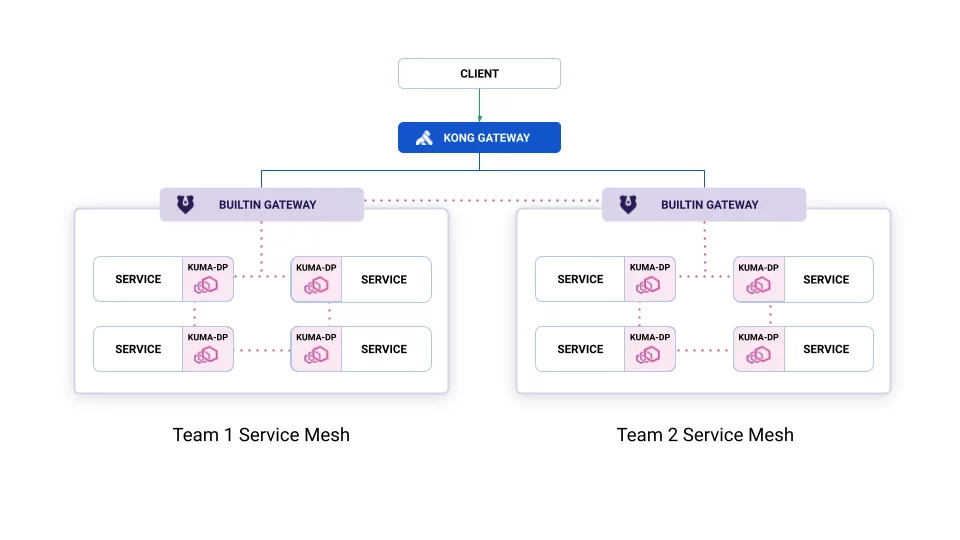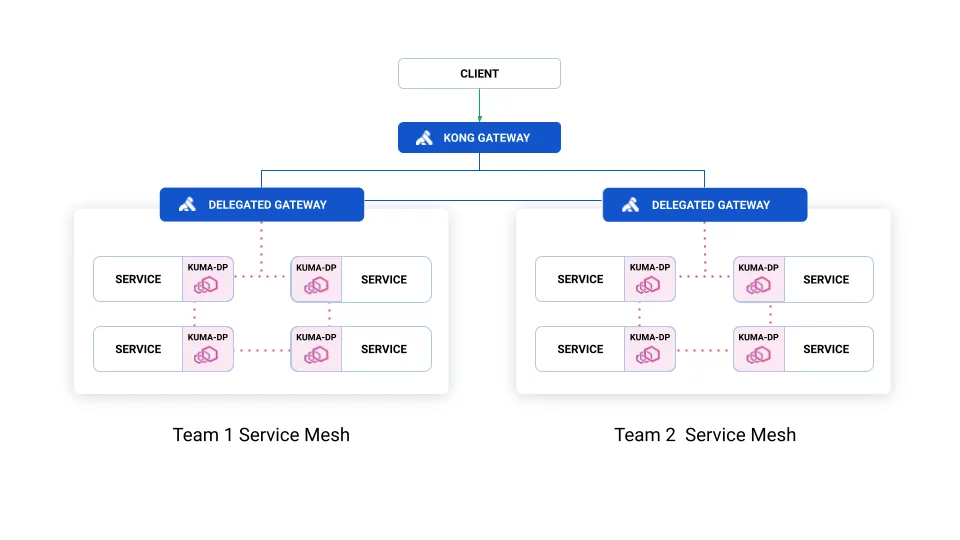Kong Mesh provides two features to manage ingress traffic, also known as north/south traffic. Both take advantage of a piece of infrastructure called a gateway proxy, that sits between external clients and your services in the mesh.
- Delegated gateway: allows users to use any existing gateway proxy, like Kong.
- Builtin gateway: configures instances of Envoy to act as a gateway.
Gateways exist within a
Mesh. If you have multipleMeshes, eachMeshrequires its own gateway. You can easily connect yourMeshestogether using cross-mesh gateways.
The below visualization shows the difference between delegated and builtin gateways. The blue lines represent traffic not managed by Kong Mesh.
Builtin, with Kong Gateway at the edge:

Delegated Kong Gateway:
